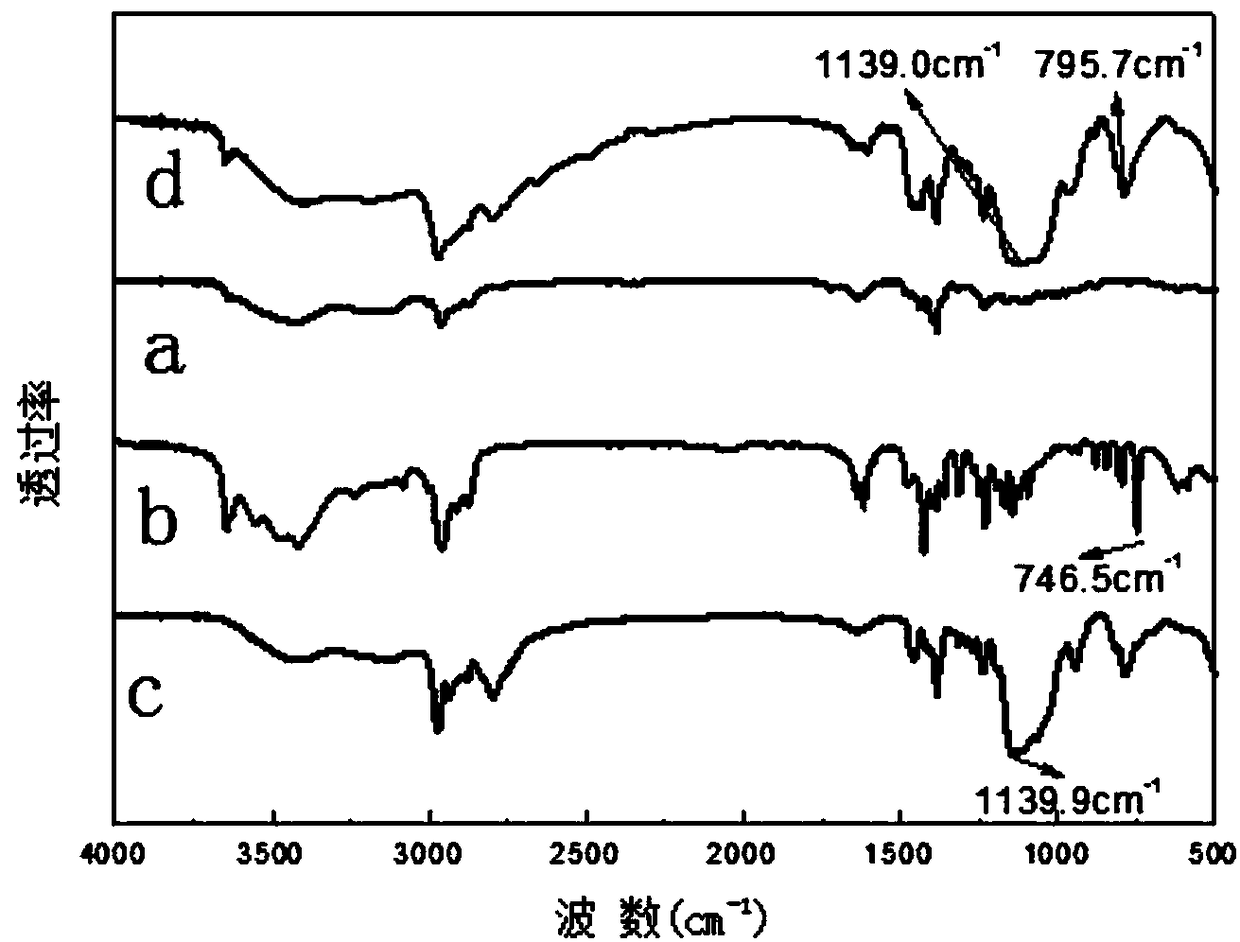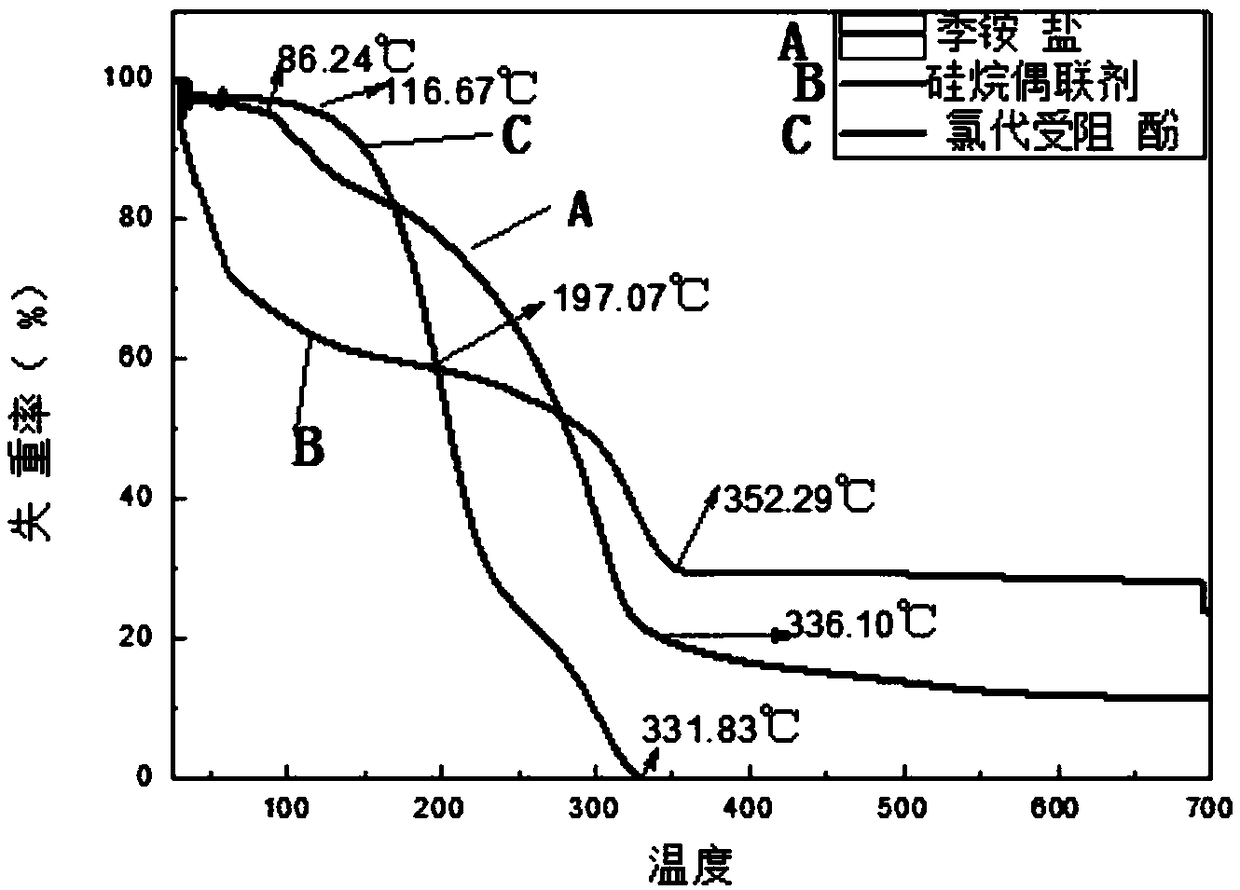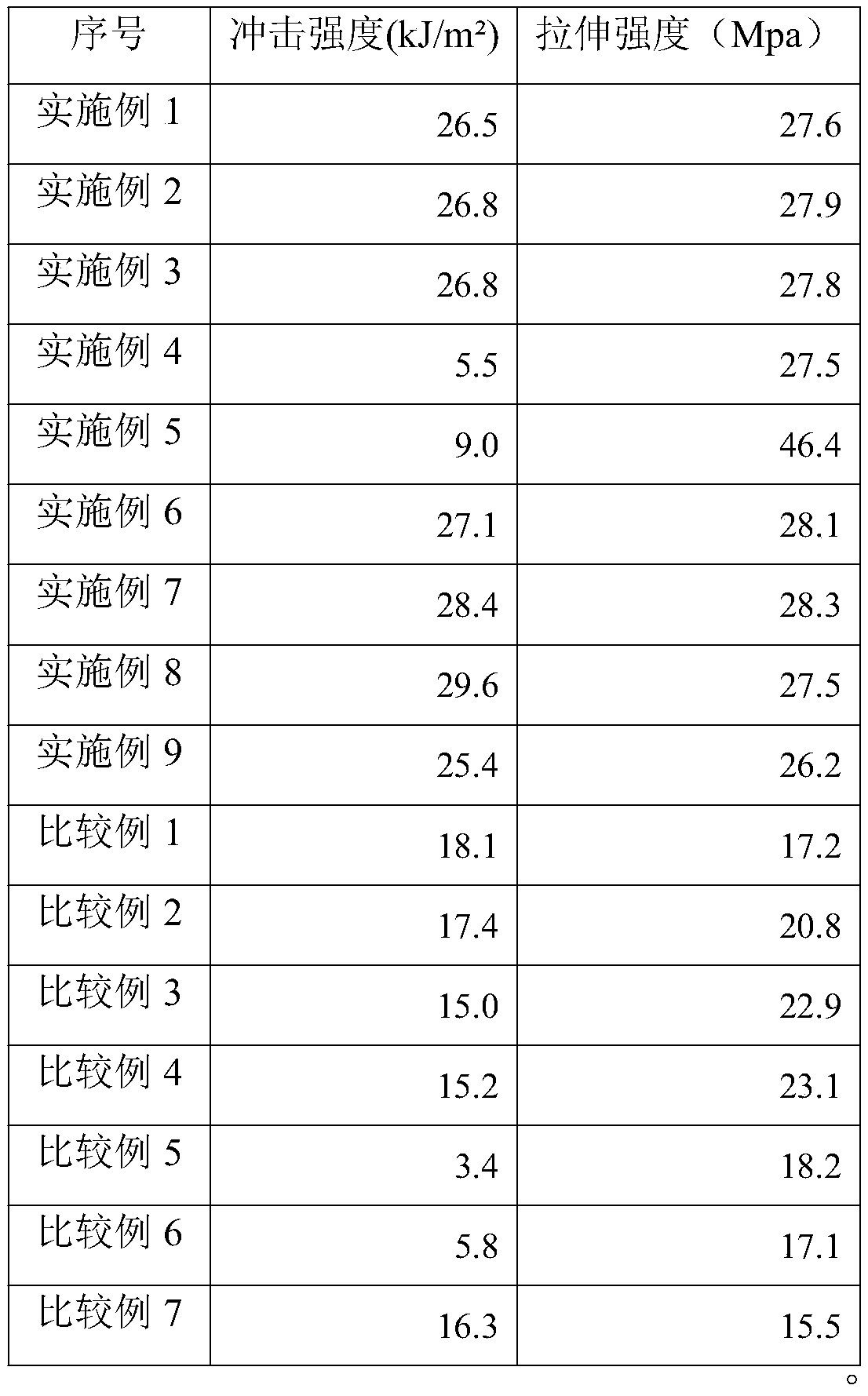Polyolefin containing hindered phenol-structured novel silane coupling agent modified ardealite and preparation method of polyolefin
A technology of silane coupling agent and hindered phenol, which is applied in the field of modified polyolefin and its preparation, can solve the problems of not being able to suppress the breakage of polyolefin molecular chains, the difficulty of dispersing antioxidants and inorganic fillers, and the problems of antioxidants and inorganic fillers. Inorganic fillers are difficult to mix evenly, so as to achieve the effect of reducing surface energy, avoiding uneven dispersion and reducing the process
- Summary
- Abstract
- Description
- Claims
- Application Information
AI Technical Summary
Problems solved by technology
Method used
Image
Examples
Embodiment 1
[0022] (1) Benzyl chloride hindered phenol The preparation is the same as the CN104744813A method.
[0023] (2) Synthesis of hindered phenol new silane coupling agent: in N 2 Under protection, add 10 parts of the above synthesized benzyl chloride hindered phenol, 5 parts of dimethylsulfoxide, 10 parts of diethylaminomethyltriethoxy silane The oil temperature rises to 80°C, reacts for 10-48 hours, washes with 20 parts of petroleum ether, and vacuum-dries at 30°C for 12 hours to obtain a hindered phenol new silane coupling agent, recovers the solvent by fractional distillation, and marks it as a hindered phenol new silane coupling agent 1
[0024] Infrared analysis (FT-IR, figure 1 ) and thermogravimetric (TG, figure 2 )analyze. right figure 1 analyzed by figure 1 The curves a and b show that the wave number is 2980cm -1 The left and right peaks are the stretching vibration peaks of H on the benzene ring, and the wave number in curve b is 746.5cm -1 It is the chara...
Embodiment 2
[0031] The difference between this example and Example 1 is that in the synthesis step (1) of hindered phenol new silane coupling agent 1, the temperature is changed to 90°C, the reaction time is 8h, and diethylaminomethyltriethoxysilane is changed to 12 parts, the amount of solvent is 10 parts, and 40 parts of petroleum ether. The vacuum drying temperature is 25°C, and the drying time is 14h; (2) The processing ingredients are changed to add 0.25 parts of hindered phenol new silane coupling agent to 30 parts by mass of phosphogypsum, and the modification process is high-speed stirring at 70°C for 20 minutes.
[0032] The thermal and oxidative aging properties are shown in Table 1. It can be seen from Table 1 that after adding 0.25 parts of hindered phenol new silane coupling agent modified phosphogypsum random copolymerized polypropylene, after extruding different times, the melt index increased slightly, but the change was not large, indicating random The molecular chain of...
Embodiment 3
[0035] The difference between this implementation and Example 1 is that in the synthesis step (1) of hindered phenol new silane coupling agent 1, the temperature is changed to 100°C, the reaction time is 12h, and the amount of diethylaminomethyltriethoxysilane is 15 parts , the solvent was changed to 20 parts of toluene and 50 parts of petroleum ether. The vacuum drying temperature is 45°C, and the drying time is 10h; (2) The processing ingredients are changed to add 0.1 part of hindered phenol new silane coupling agent 1 to 30 parts by mass of phosphogypsum, and the modification process is high-speed stirring at 80°C for 25 minutes .
[0036] The thermal and oxidative aging properties are shown in Table 1. It can be seen from Table 1 that after adding 0.1 parts of hindered phenol new silane coupling agent 1 to modify the random copolymer polypropylene of phosphogypsum, the melt index increased slightly after extrusion for different times, but the change was not large, indica...
PUM
 Login to View More
Login to View More Abstract
Description
Claims
Application Information
 Login to View More
Login to View More - R&D
- Intellectual Property
- Life Sciences
- Materials
- Tech Scout
- Unparalleled Data Quality
- Higher Quality Content
- 60% Fewer Hallucinations
Browse by: Latest US Patents, China's latest patents, Technical Efficacy Thesaurus, Application Domain, Technology Topic, Popular Technical Reports.
© 2025 PatSnap. All rights reserved.Legal|Privacy policy|Modern Slavery Act Transparency Statement|Sitemap|About US| Contact US: help@patsnap.com



